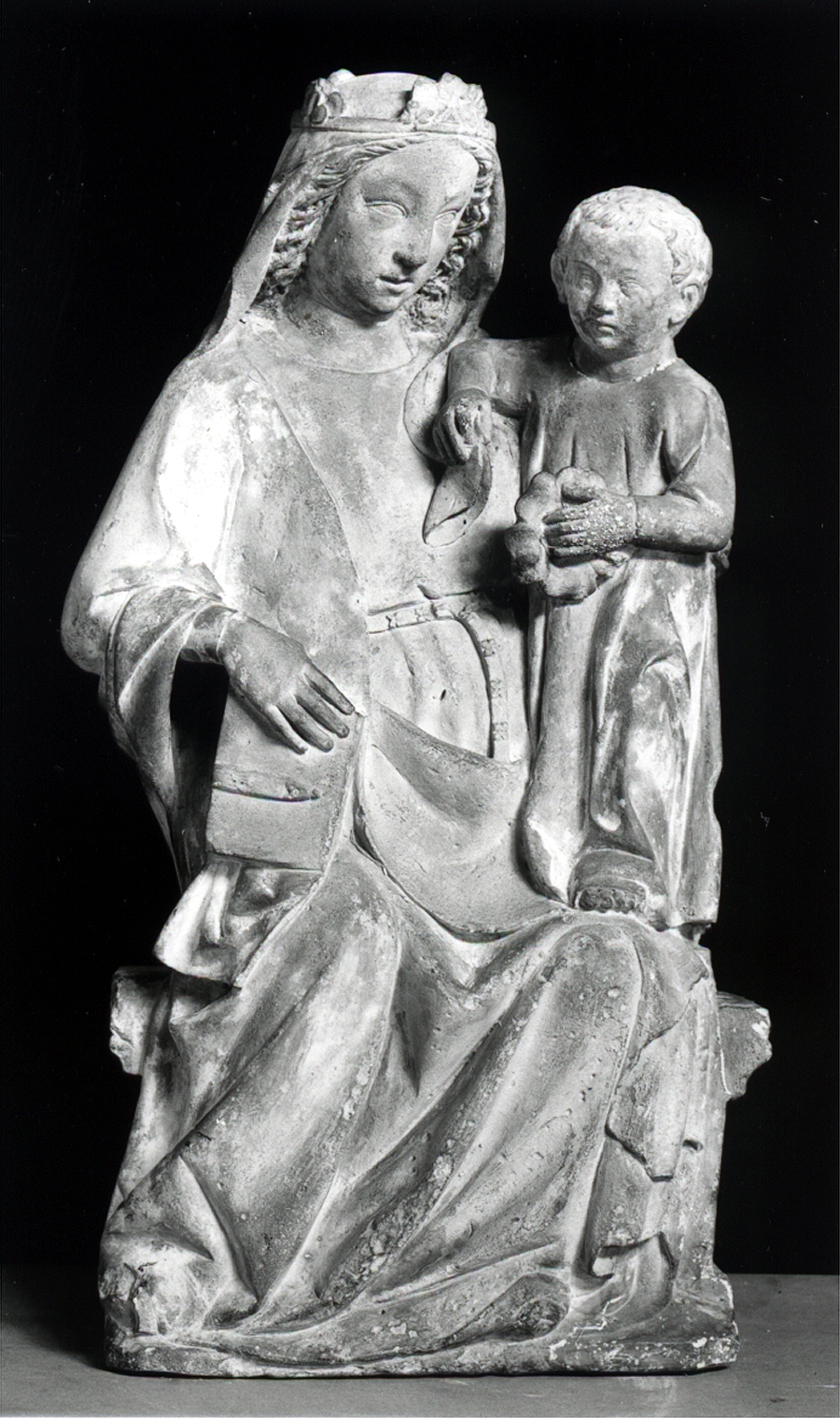Virgin and Child
(Medieval Europe )
Unique to the carved statues of the duchy of Lorraine are the broad faces and tender, pensive expressions of the Virgin and Child. In the 14th century, Lorraine acted as a buffer state between France and the German Empire, and in the process its artists absorbed styles from both regions. The figures' poses are French, while the motif of the wild rose held in the Child's hand and decorating the Virgin's crown and belt comes from southern Germany.
Provenance
Provenance (from the French provenir, 'to come from/forth') is the chronology of the ownership, custody, or location of a historical object. Learn more about provenance at the Walters.
Dikran Kelekian, New York and Paris; Henry Walters, Baltimore, January 21, 1921, by purchase; Walters Art Museum, 1931, by bequest.
Conservation
| Date | Description | Narrative |
|---|---|---|
| 6/14/1966 | Treatment | cleaned |
| 6/23/1971 | Treatment | cleaned |
Measurements
20 1/4 x 11 1/2 x 6 11/16 in. (51.5 x 29.2 x 17 cm)
Credit Line
Acquired by Henry Walters, 1921
Location in Museum
Accession Number
In libraries, galleries, museums, and archives, an accession number is a unique identifier assigned to each object in the collection.
In libraries, galleries, museums, and archives, an accession number is a unique identifier assigned to each object in the collection.
27.429


